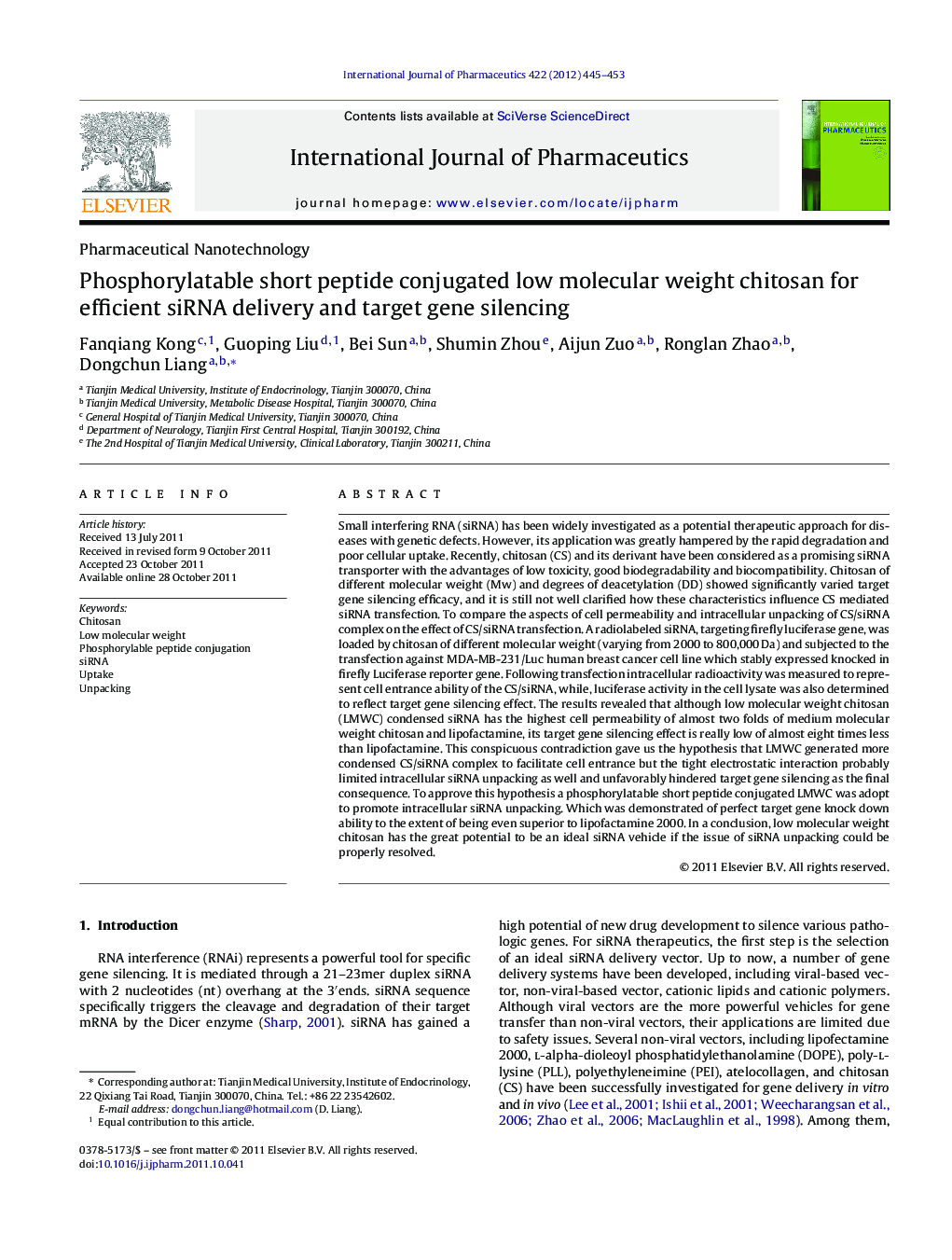| Article ID | Journal | Published Year | Pages | File Type |
|---|---|---|---|---|
| 2503130 | International Journal of Pharmaceutics | 2012 | 9 Pages |
Small interfering RNA (siRNA) has been widely investigated as a potential therapeutic approach for diseases with genetic defects. However, its application was greatly hampered by the rapid degradation and poor cellular uptake. Recently, chitosan (CS) and its derivant have been considered as a promising siRNA transporter with the advantages of low toxicity, good biodegradability and biocompatibility. Chitosan of different molecular weight (Mw) and degrees of deacetylation (DD) showed significantly varied target gene silencing efficacy, and it is still not well clarified how these characteristics influence CS mediated siRNA transfection. To compare the aspects of cell permeability and intracellular unpacking of CS/siRNA complex on the effect of CS/siRNA transfection. A radiolabeled siRNA, targeting firefly luciferase gene, was loaded by chitosan of different molecular weight (varying from 2000 to 800,000 Da) and subjected to the transfection against MDA-MB-231/Luc human breast cancer cell line which stably expressed knocked in firefly Luciferase reporter gene. Following transfection intracellular radioactivity was measured to represent cell entrance ability of the CS/siRNA, while, luciferase activity in the cell lysate was also determined to reflect target gene silencing effect. The results revealed that although low molecular weight chitosan (LMWC) condensed siRNA has the highest cell permeability of almost two folds of medium molecular weight chitosan and lipofactamine, its target gene silencing effect is really low of almost eight times less than lipofactamine. This conspicuous contradiction gave us the hypothesis that LMWC generated more condensed CS/siRNA complex to facilitate cell entrance but the tight electrostatic interaction probably limited intracellular siRNA unpacking as well and unfavorably hindered target gene silencing as the final consequence. To approve this hypothesis a phosphorylatable short peptide conjugated LMWC was adopt to promote intracellular siRNA unpacking. Which was demonstrated of perfect target gene knock down ability to the extent of being even superior to lipofactamine 2000. In a conclusion, low molecular weight chitosan has the great potential to be an ideal siRNA vehicle if the issue of siRNA unpacking could be properly resolved.
Graphical abstractFigure optionsDownload full-size imageDownload as PowerPoint slide
